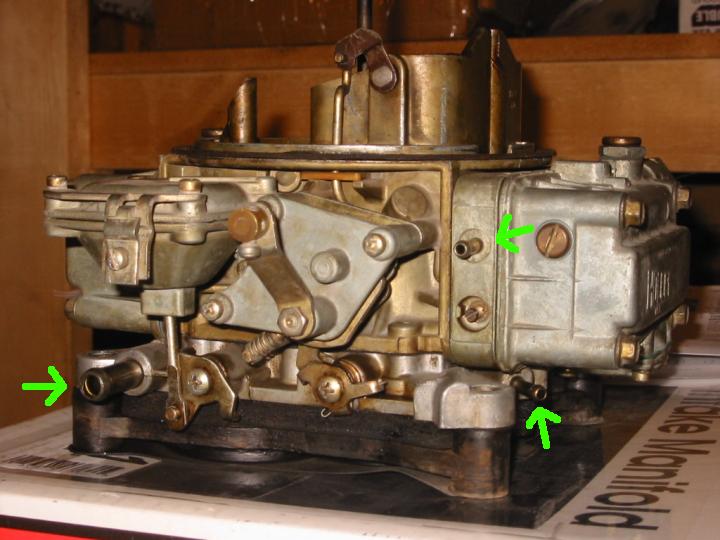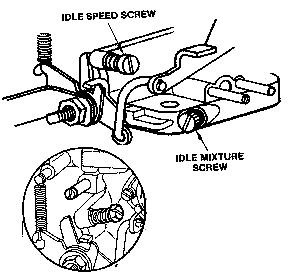
So your engine starts and runs, but it's got a miss or you changed parts or you want to make sure it's running it's best.
First, Make sure that the points are set properly with a dwell meter.
Gapping is fine for setting them, but a dwell meter is used to check them when running. Make sure you are reading the numbers right and the meter is set for the right number of cylinders.
V8s like 27-32 degrees, with 30 the optimum.
6s like around 35-37 degrees.
Always check for your exact specification!
Rev the engine from idle (600-1000 RPM) to around 2000 RPM slowly and smoothly. The dwell should not change more than a couple degrees.
Snap accelerate from idle to 2000 RPM. Again, it should not change.
If it does, the dist. breaker plate is not keeping the points steady, and all the tuning in the world doesn't fix bad parts.
Connect a timing light. You can time by ear and vacuum, but you need to know what the adjustment is and if it falls within limits. It takes time to develop a feel for this, and having the actual numbers to confirm aids this learning.
Connect the vacuum gauge to a manifold vacuum port. These will be on the manifold itself or at the base of the carb.
There are often PORTED vacuum ports too, so when you start it and allow it to idle, there should be over 10" of vacuum on the gauge. If not, move the gauge hose to another port.

Okay, so you have a warm, running engine and a vacuum gauge connected to manifold vacuum.
With the timing set to stock specifications (usually 0-10 degrees before TDC), check the vacuum gauge.
NOTE: modified engines will modify the vacuum! Most high performance parts tend to increase performance at higher RPMS. This tends to cause a less smooth, choppier idle. Many high performance cams can lower idle vacuum from 18 inches to as low as 10 inches or less! If you have a modified engine, the timing and tuning must also be modified to allow a decent idle.
A stock engine in good condition will develop around 18 inches of vacuum at idle. The needle should be smooth and steady. Raise the idle RPM up to about 1500 RPM. The reading should be the same or slightly higher. Check again at 2000 RPM. It should also be the same.
There are readings that can show other problems.
See this picture. It's too big for this forum, so I've included a link.
This will allow you to narrow down problems, but is only a guide. Diagnosing these issues is a whole other article.
http://waywardgarage.com/tech/vacuum.jpg
Now, how do you tune with the gauge?
You can time using the gauge, but always verify using a light.
Advance the distributor, watching the gauge, until you see the highest reading.
You will notice that the engine picks up RPM and smooths out as the timing is advanced. If the timing is retarded, it will lower the RPM, run less smoothly, and tend to sound less 'sharp'. Over-advancing causes it to drop and stumble. Swing the distributor back and forth slowly, finding that happy spot where it's smooth, high RPM and high vacuum. Remember that vacuum reading. Now, retard the timing so the vacuum gauge drops 2 inches. For example, if the highest reading is 19", move it to 17". I have found that setting the timing at the highest point ALWAYS causes too much initial timing and detonation. This can damage the engine! After adjusting the timing this way with the 2 inch drop, check the timing with a light. It will normally be 5-12 degrees BTDC. A modified engine will want more, often 15-18 degrees!
NOTE:When setting a modified engine timing to over 12 degrees, the total timing MUST be adjusted so it does not exceed 35-38 degrees. This requires modifying the centrifugal advance. Make sure you understand and perform this before driving with too much total advance!
Now, go ahead and snug the distributor so the timing does not change.
The needle on the gauge should be steady. Set the idle RPM to specification.

Adjust the idle mixture screws. These are normally set to somewhere between 3/4 of a turn from lightly seated to about 1 3/4 out. Turn each one slowly in. The RPM should drop and the vacuum should too. Slowly turn them back out, paying attention to the vacuum gauge and how the engine is running. When too far in (except Holley Economaster reverse mixture screws), the engine is lean and tends to 'shake'. As you back out the screw, it will be the right mixture and smooth out. Too far out and the engine is running rich, the vacuum drops and the engine 'rolls'. Adjust these in and out a few times to get a feel for these descriptions and where the screw gets the highest reading. Remember that it may take a few seconds for the engine to react to what you are doing. Slow and steady!
Adjust each screw in turn, paying attention to where it's the highest vacuum and smoothest. If the idle increases too much, reset the idle speed and readjust the mixture.
To keep the mileage up and the gas stink out of the exhaust, it's best to do a final adjustment to "Best Lean Idle". That is, after it's all set as smooth and the highest vacuum reading you can get, turn the screws in a bit, watching the vacuum gauge. You will find there is a bit of adjustment before the gauge reading starts to drop. Adjust to that point where it's just starting to drop. You will probably have to go back and forth a couple times if you have more than one mixture screw.
As a final check, if you have an automatic trans, check the idle in gear. Be Careful! The mixture can be adjusted here too, but tends to be a bit rich.
Now on all vans, shut it off. Wait 30 seconds or so and restart. It should fire off immediately.









